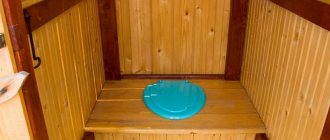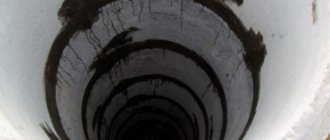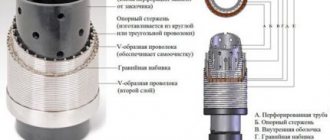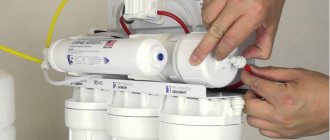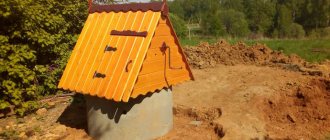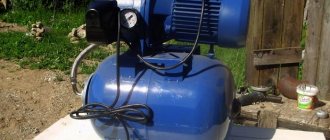What is the aeration method?
Purification using the aeration method allows you to rid water of impurities such as iron, manganese and hydrogen sulfide. The purification process consists in the fact that these elements, when interacting with oxygen, are oxidized and from a soluble form are converted into an insoluble precipitate, which then settles in the filter.
The aeration process alone cannot purify drinking water, but this is a mandatory step, without which high-quality filtration is impossible.
There are different methods for oxidizing liquids, but most of them have a high cost, while aeration is a simple, accessible and cheap method. At the same time, it is effective.
Benefits of aeration:
- Safety. When using this cleaning method, no foreign elements are added that may be harmful to humans.
- Low cost. This method is cheap compared to other methods of oxidizing drinking water; it is enough to buy a compressor and pay for the electricity used.
- The taste of water improves as it is saturated with oxygen.
- The process can be completely automated.
- This technology is environmentally friendly.
As a disadvantage of the method, one can note the need to purchase bulky equipment, but compact devices have been developed for domestic use. If you have the desire and basic skills, then you can make such equipment with your own hands.
There are several cleaning methods; it can be carried out using free-flow, pressure and ejector aeration methods. Each of these cleaning options has its own characteristics, advantages and disadvantages.
How to do it yourself
You can buy an aerator for approximately 800-1300 rubles. However, its design is quite simple, so making a water saver with your own hands will be quite easy. For this we will need the following materials:
- a regular faucet nozzle with a grille installed in it;
- plastic from which gaskets or a spray with slots are made.
Unscrew the nozzle and remove the brass grille from it. A plastic gasket will be installed in its place. If you managed to find just a piece of plastic, you need to carefully cut it out, observing the dimensions of the previous grid, then draw out the mesh and make holes.
After replacing the elements, we reassemble the nozzle and attach it to the tap. Such a device will perform the same functions as a store-bought aerator, but, unlike it, it will actually help save money.
Pressure cleaning method
With simple contact between water and air, the liquid is poorly and slowly saturated with oxygen, so equipment called a water aeration column is used to activate the process. Such devices consist of a tank, a compressor and a filter.
The aeration column is connected to a water supply system or to a well, from which water is supplied by a pump. After filling the tank, the compressor is turned on and air is supplied, while the process of water oxidation occurs actively and quickly.
When a certain pressure is reached, excess air is released and the device continues to operate. After the water is saturated with oxygen, it passes through a filter in which oxidized, that is, solid particles of iron, manganese and other elements settle, and at the output you get a purified liquid.
The structure of the aeration column is as follows:
- a sealed tank with a capacity of about 100-500 l;
- sensor that controls water flow;
- compressor;
- pressure relief valve.
This method allows you to effectively get rid of iron, but it does not remove hydrogen sulfide very well. In this case, it is recommended to use chemical oxidizers, so the aeration column must have additional equipment.
The advantages of the method will be as follows:
- Due to the fact that high pressure is created inside the system, water interacts with air as much as possible, so iron is well oxidized.
- The compact dimensions of the cylinders allow the use of such devices for domestic purposes.
- There is no loss of pressure in the water supply system at the outlet of the system.
The main disadvantage of such a system is the high cost of the equipment used; in this regard, it is inferior to the non-pressure aeration method.
Let's sum it up
Having designed such a system, I solved the problem in full. Everything works automatically and does not require intervention. A year of trouble-free operation did not reveal any weak points: the water does not smell, the plumbing is snow-white. They forgot about the rusty coating - the wife was washing white linen. In all this time I have not changed a single replaceable cartridge, just like the sand in the filter unit.
Some additions
Instead of the primary pumping station, in order to save money, it was possible to install a low-power vibration pump, that is, lower it into the well. This is justified, because the purpose of the primary station is to slowly pump the required liters into the tank; high pressure and pump power are not needed here. But the trick is that, having a productive pumping station in the primary circuit, we can use it as a backup source of water supply in the event of a malfunction of the aeration column, a breakdown of the sand filter, or failure of the main secondary station. This also allows you to carry out repairs or maintenance of the system without disconnecting consumers.
The system includes a load circuit breaker panel and controls for a heating cable that runs along the suction pipe from the well to the house.
Related link: How to save water using a homemade faucet with a nozzle
Non-pressure cleaning method
When using this cleaning method, water is supplied to the aeration column through nozzles, therefore it enters in the form of small drops, and thus oxygen saturation occurs.
In addition, with the help of a special compressor, the water is additionally saturated with oxygen, while air is supplied into its thickness. When using this method, due to the spraying of the water flow at the outlet, its pressure decreases. To eliminate this drawback, you can additionally purchase a pumping station, and in the case of a well, you already have one.
Oxidation products settle at the bottom of the tank, so it needs to be cleaned periodically, this should be done at least once every 3 months, but it all depends on the degree of water contamination.
A non-pressure aeration system consists of the following components:
- sealed tank with a capacity of 400-700 l;
- nozzles through which the incoming liquid is sprayed;
- compressor with aerators and air supply device;
- pumping station;
- hydraulic accumulator;
- filters;
- system control unit.
This method is commonly used for aeration on an industrial scale. Among its main advantages, it is worth noting the ability to process a large volume of liquid, and in this case not only iron, but also manganese and hydrogen sulfide are oxidized.
This method also has its drawbacks: a pumping station is required to ensure normal pressure in the system, the equipment is large, and the tank must be periodically cleaned of oxides deposited at the bottom.
Advantages of self-production
A store-bought aerator is expensive, but its real price is approximately 50-100 rubles, depending on the design. However, manufacturers promise that their know-how pays off in just a couple of months or even one. This is a false statement, which we will now prove.
Attention! All calculations are approximate and may differ from actual figures.
The average cost of an aerator is 1,300 rubles. We take 2 pieces, since we are immediately offered to buy attachments for all the taps in the house, it turns out to be 2,600 rubles. If the price of 1 cubic meter of cold water is 30 rubles, then you need to use as much as 86 cubic meters per month to get the cost of the nozzles. To understand this figure in more detail, let’s convert it into the number of full baths. One standard bath contains approximately 200 liters of water, which makes 430 baths per month, which is 14 baths per day or every half hour per day.
With such simple calculations, it is clear that it will be unrealistic to “recoup” the cost of economizers in one or even two months. Therefore, if you want to save money, you can make your own aerator.
Ejector aeration method
In everyday life, this method is the most common, since the equipment used is small in size and low in cost. This installation operates using pressure in the system and does not need to be connected to the electrical network.
Using an ejector allows you to create a low-pressure zone, as a result of which air is sucked directly into the water supply through a special hole. The presence of a check valve prevents water from escaping.
In this case, the aeration column and additional equipment are usually not used, and oxygenated water goes directly into the filter, so this method cannot fully compete with the purification methods described above.
This method is quite suitable for purifying water from a well, water supply system or borehole, especially since the costs of purchasing and installing an ejector will be minimal.
Types of compressors
There are two types of such devices:
- Screw (SECOH);
- Membrane (Hiblow).
Screw compressors with a complete set are often used in Topaz septic tanks. They work due to two screw rotor mechanisms that forcefully pump air from outside into the septic tank and vice versa. They have a number of advantages: compact size, strength and noiselessness. The main advantage of this system is uninterrupted operation. These devices can be used in intensive working conditions all day long. But manufacturers often note that for prolonged use the system must be turned off for at least a couple of hours out of 24.
Photo - GAST rotary compressor
In addition to small aerators for private use, there are large-sized screw models of dry compression. They are large containers in which powerful rotors are installed. To cool them, oil or additional air purging is used. Such devices are used for aeration of large sewage pits and septic tanks, for example, public wells.
A diaphragm compressor operates thanks to the translational movements of the working diaphragm (membrane). This is a mini-sized compressor, but despite its dimensions, it is capable of pumping high pressure inside the storage tank. Piston mechanisms are responsible for the movement of the diaphragm (membrane). They operate thanks to a hydraulic drive. Accordingly, their functionality is ensured by the amount of drainage in the well.
Photo - membrane
Under the influence of liquid pressure, the pistons begin to move the membrane, which, due to back-and-forth movements, pumps air into the chamber. This can go on indefinitely; septic tanks do not need a “break.” They are silent and very economical to use. Some models do not even need to be connected to a power supply, as they operate entirely thanks to mechanical parts.
